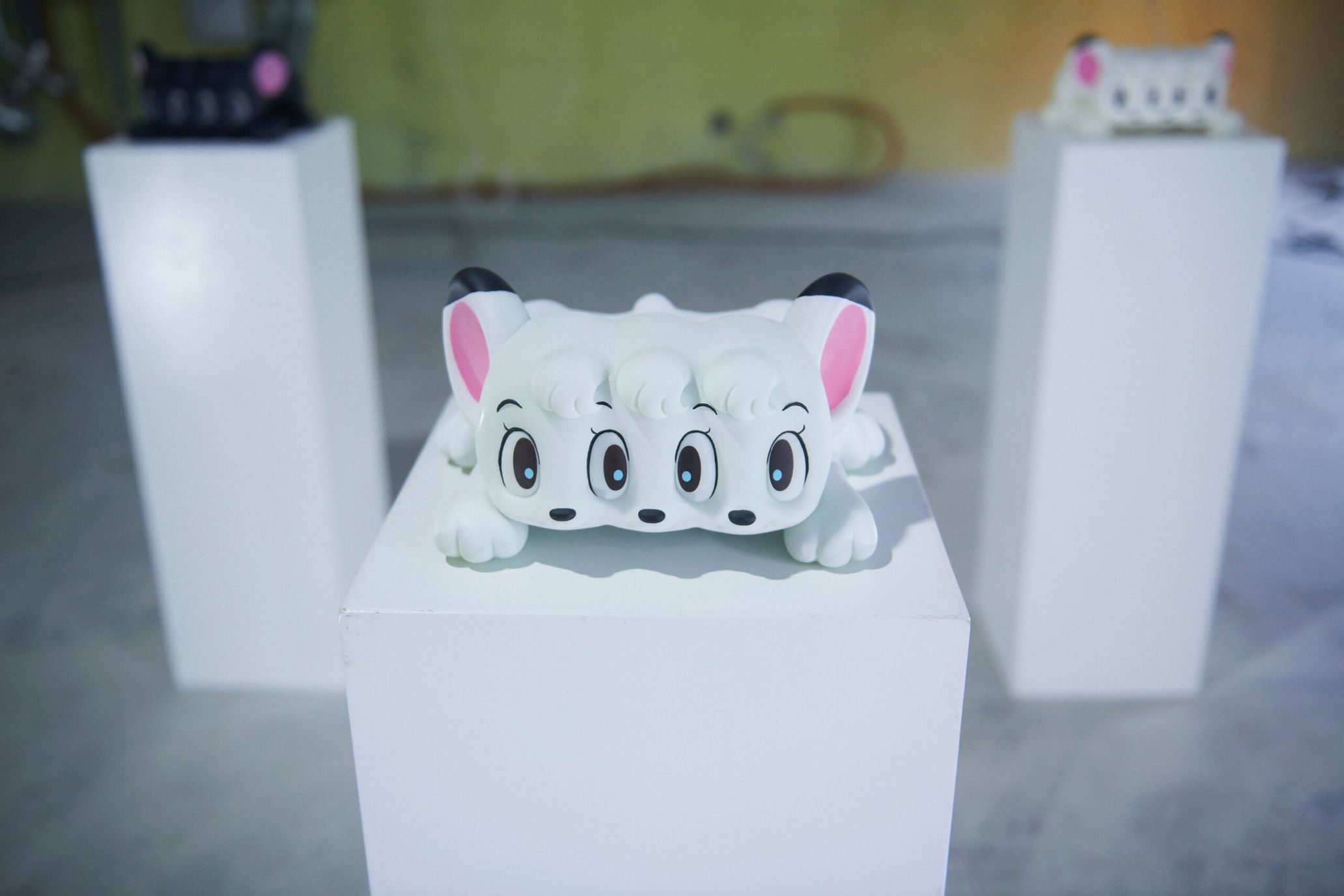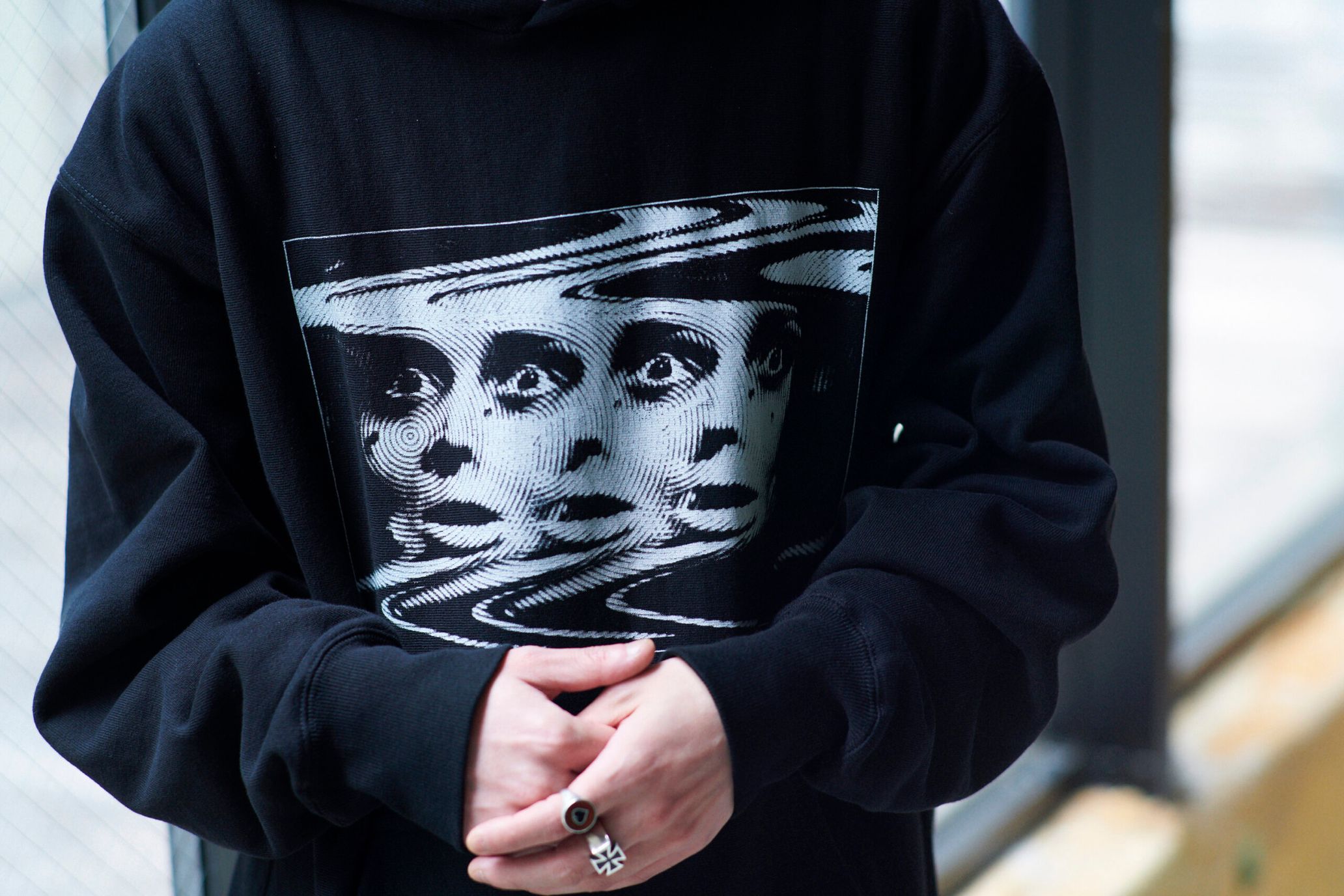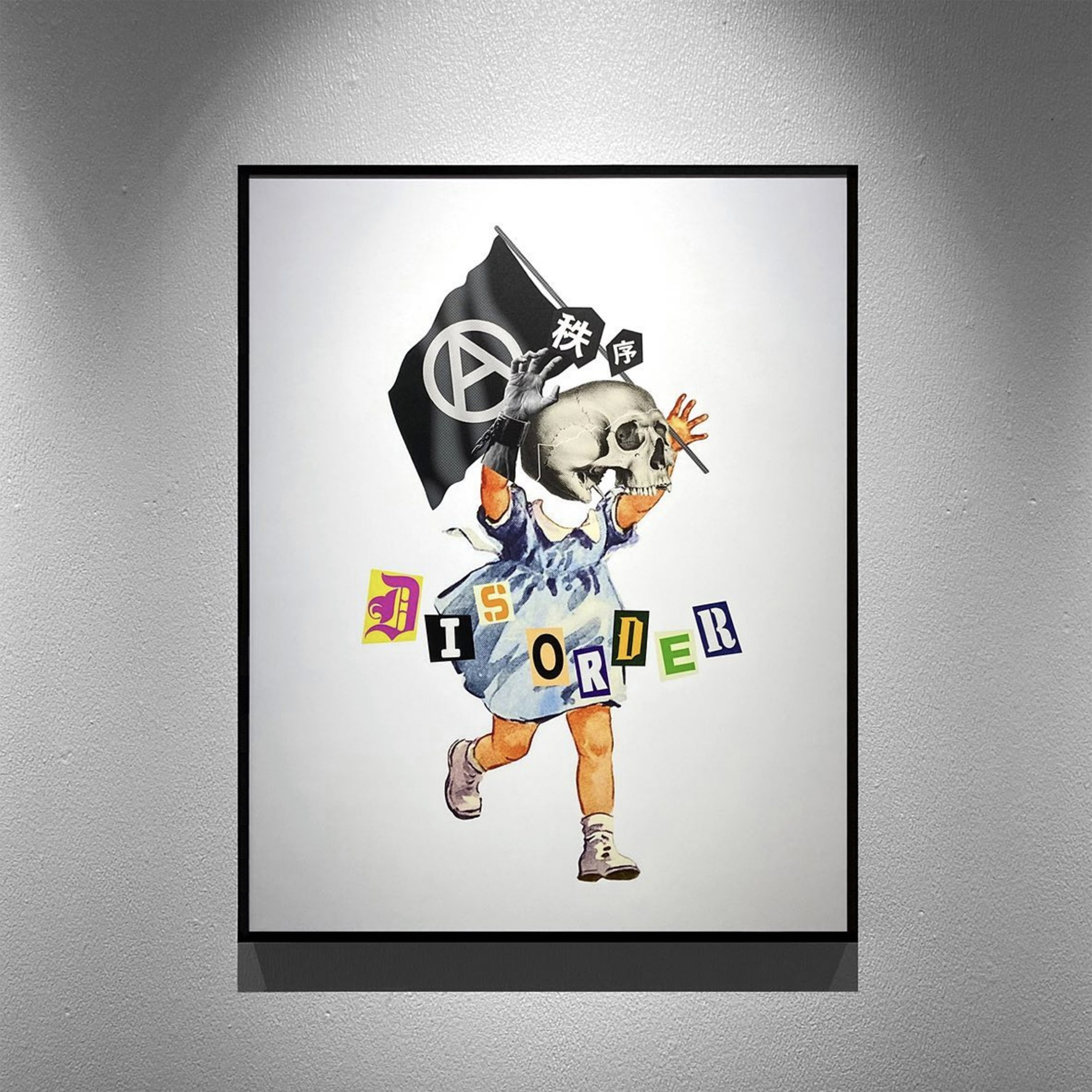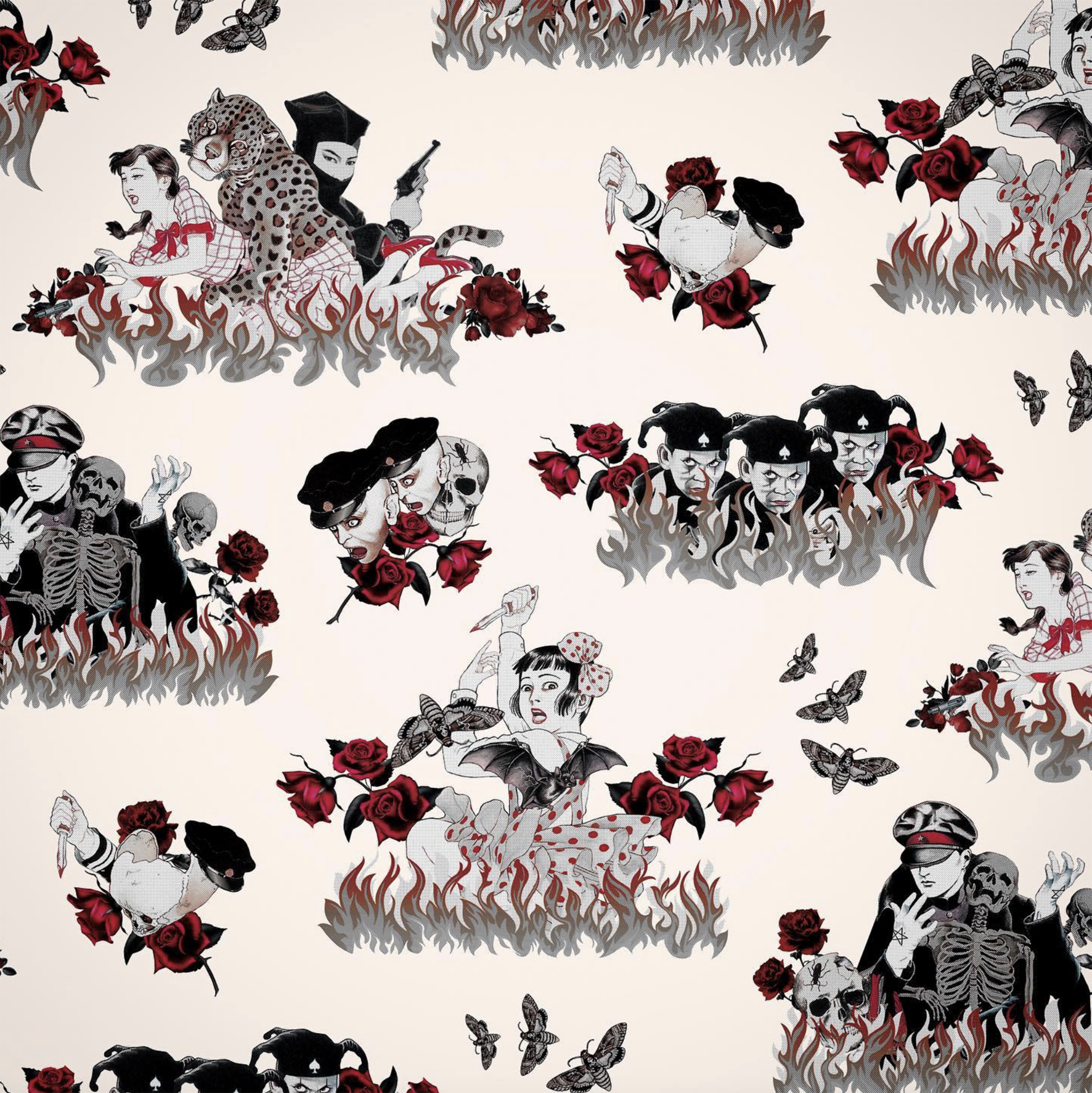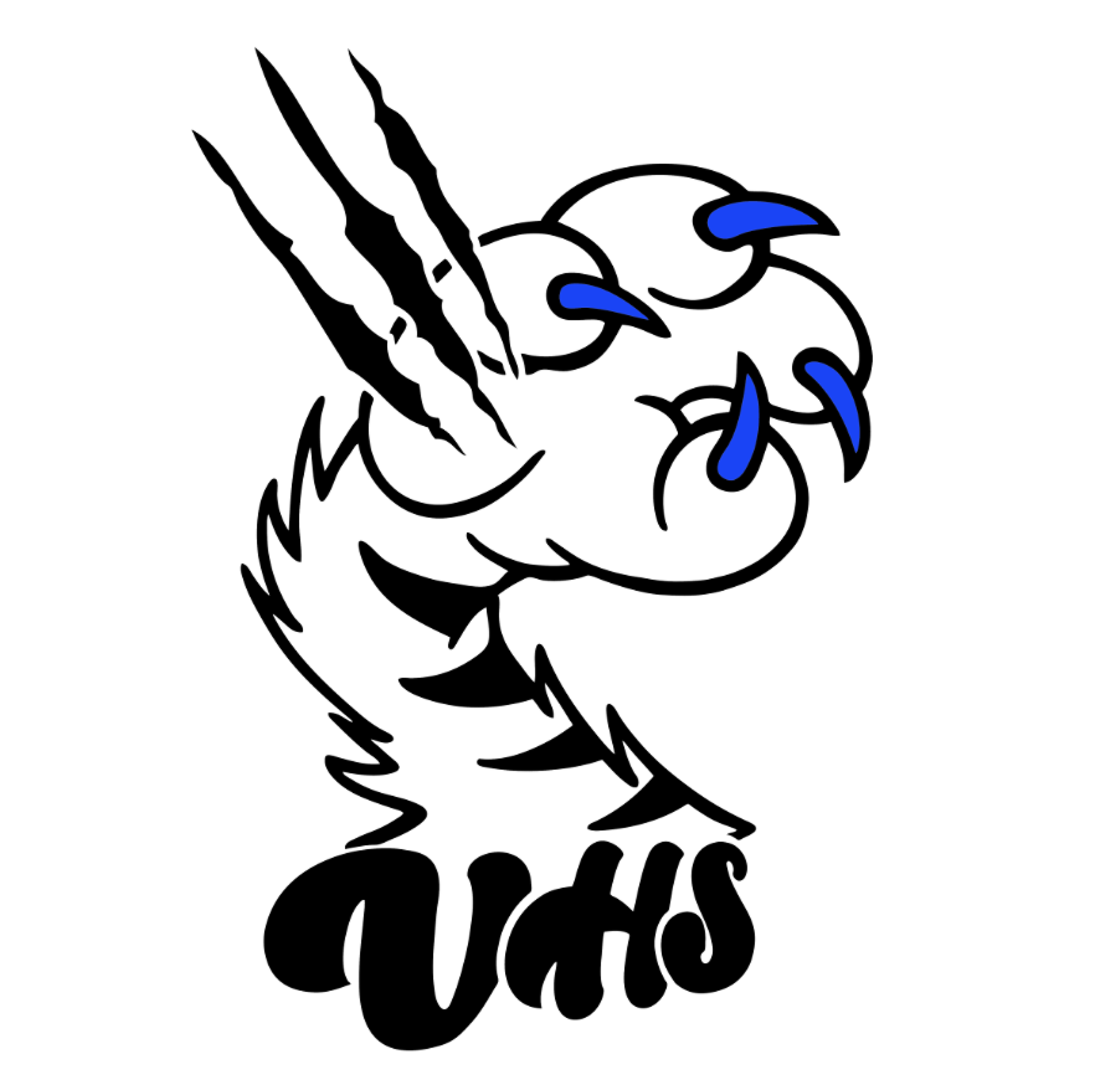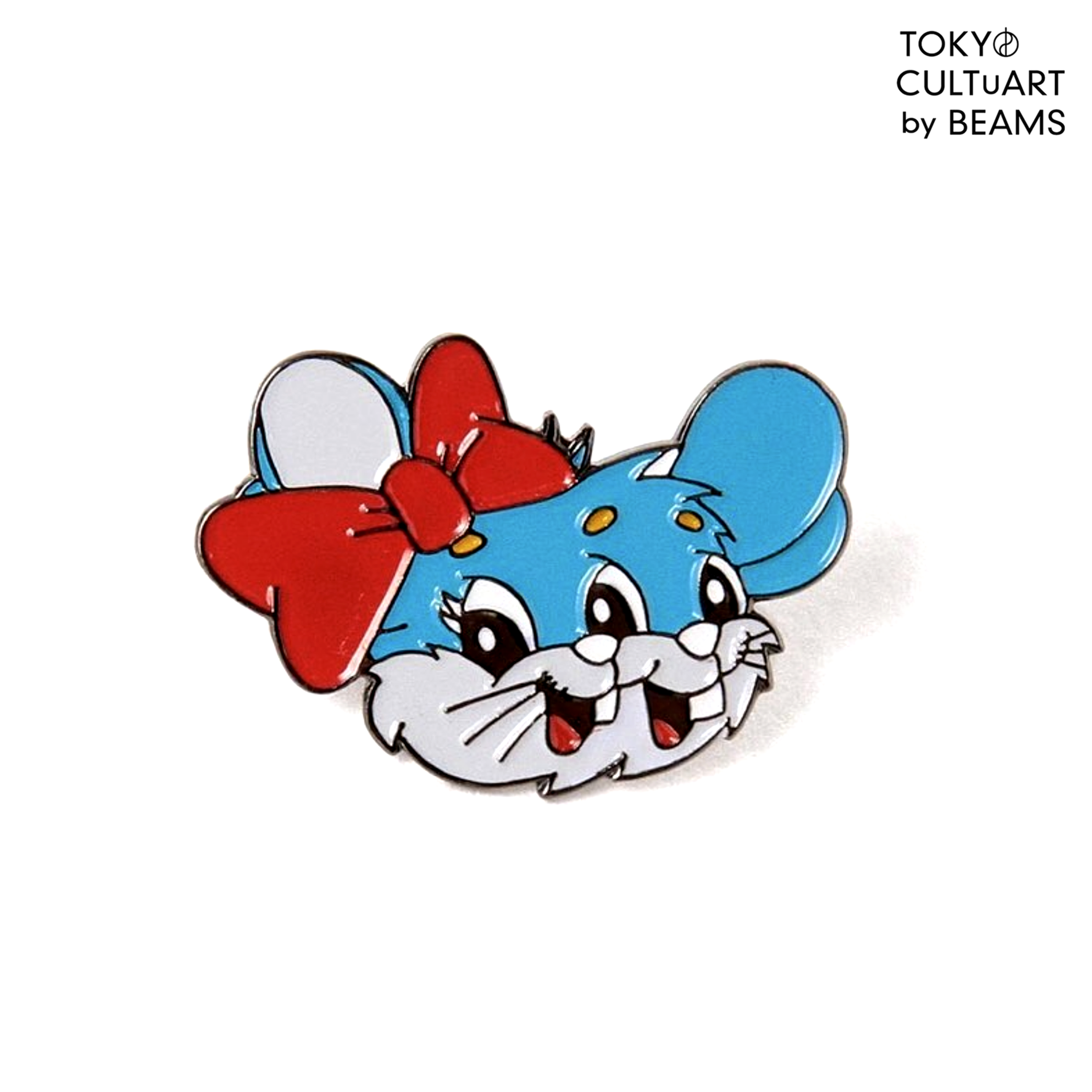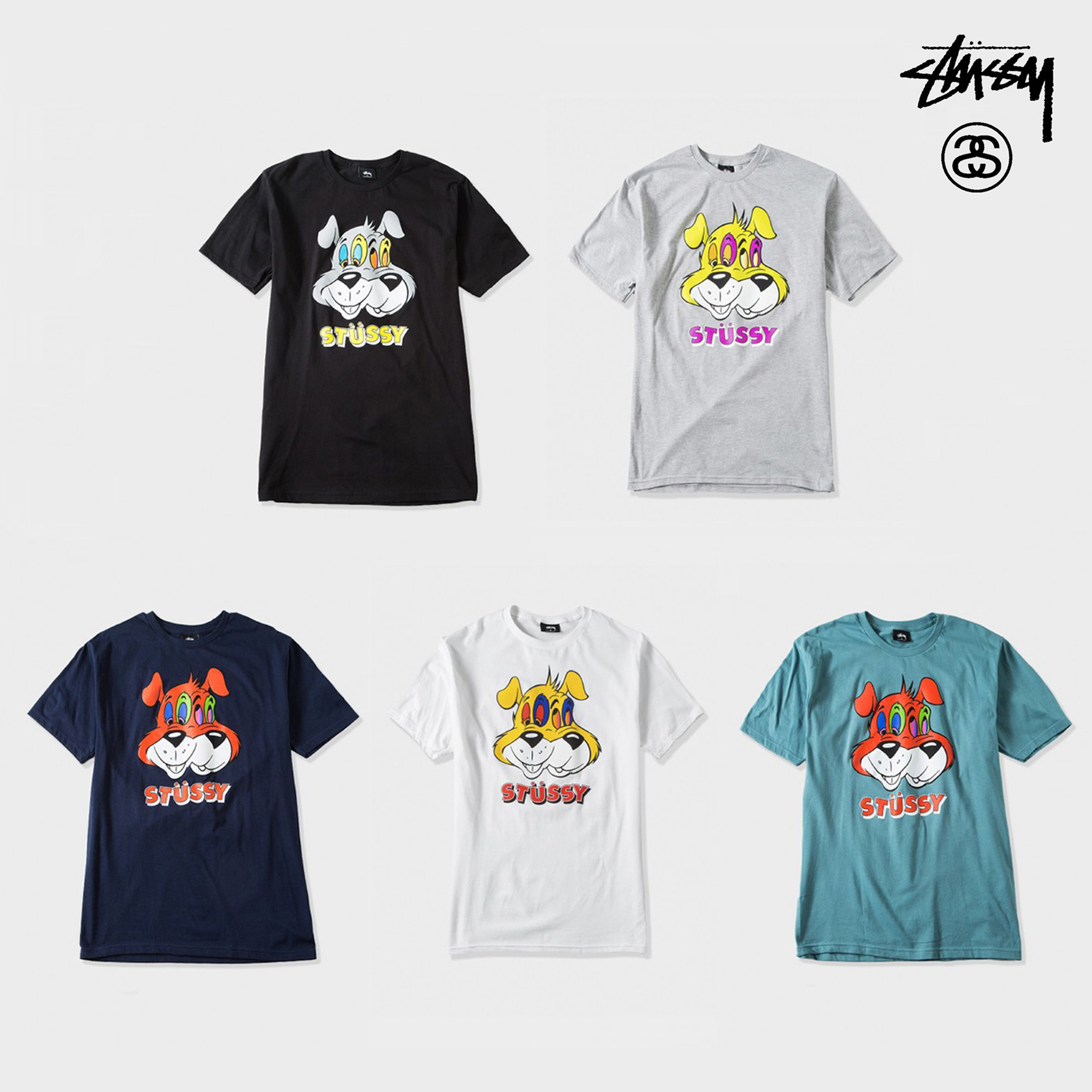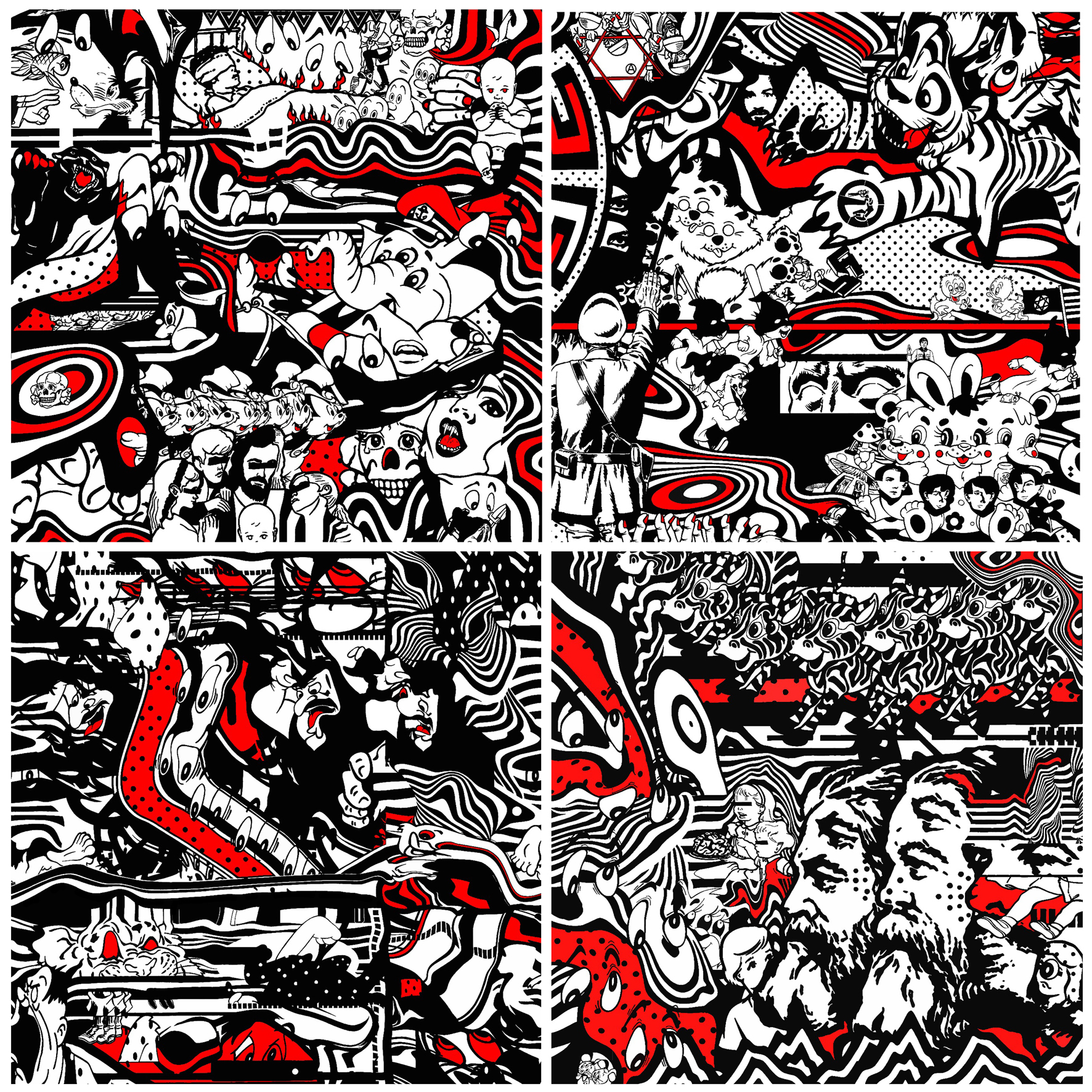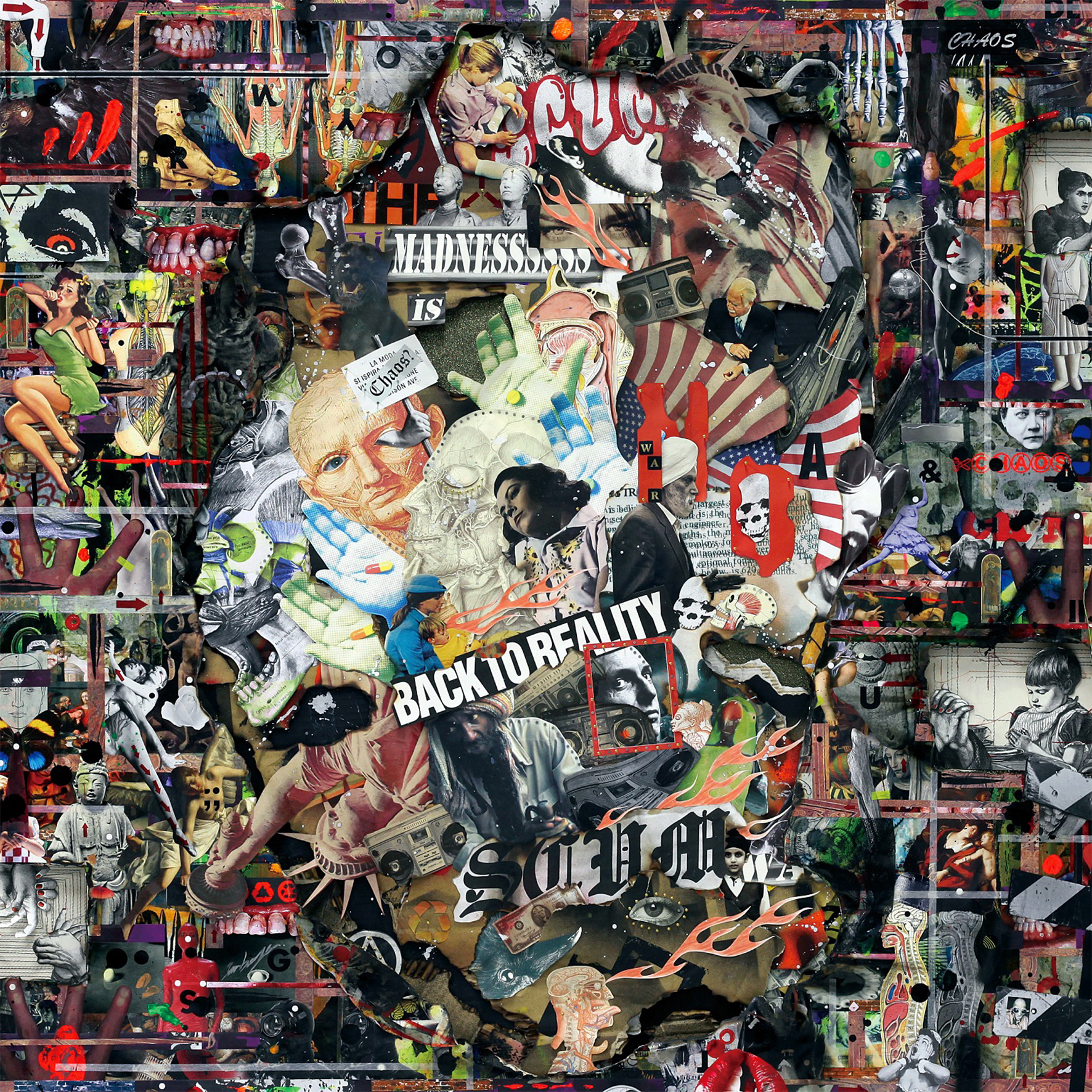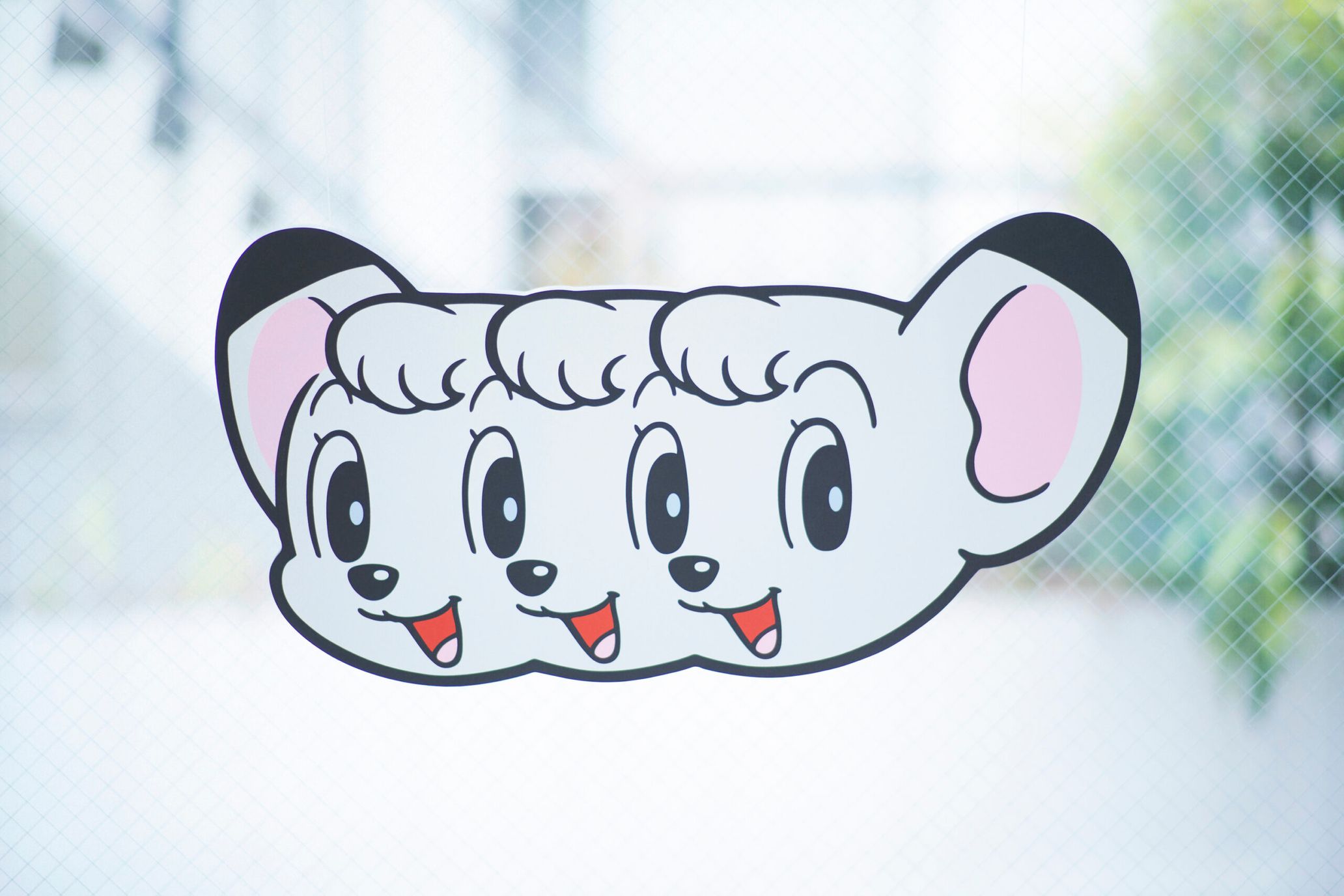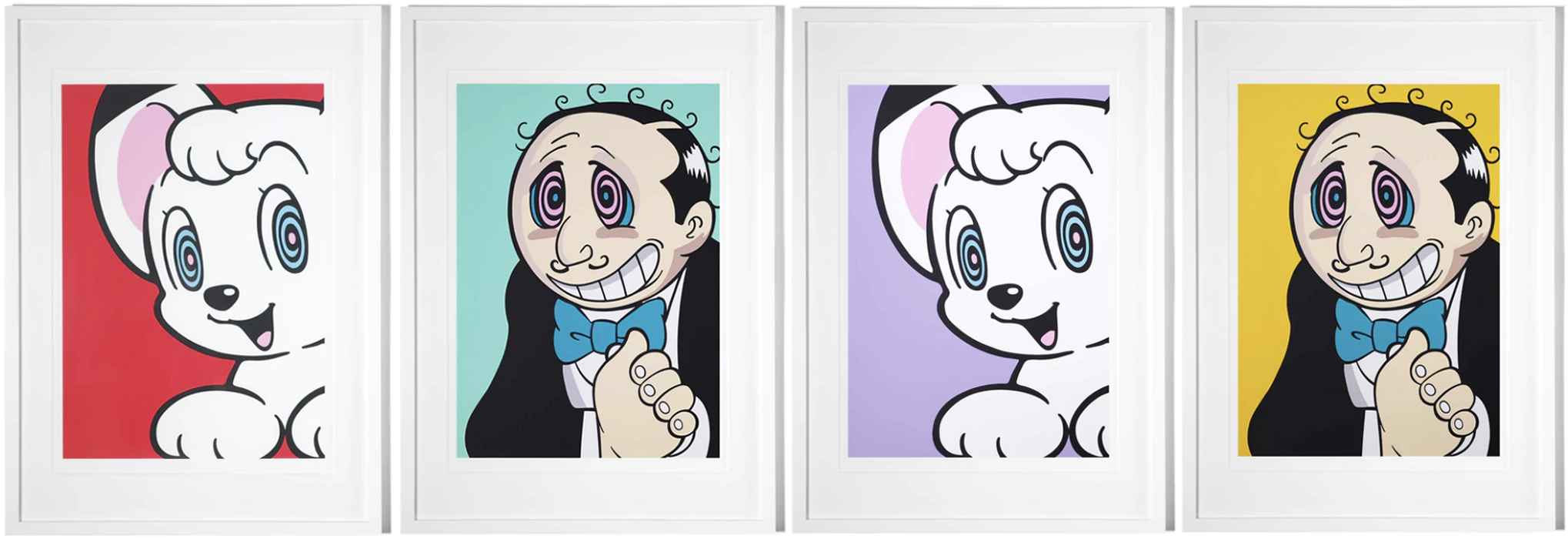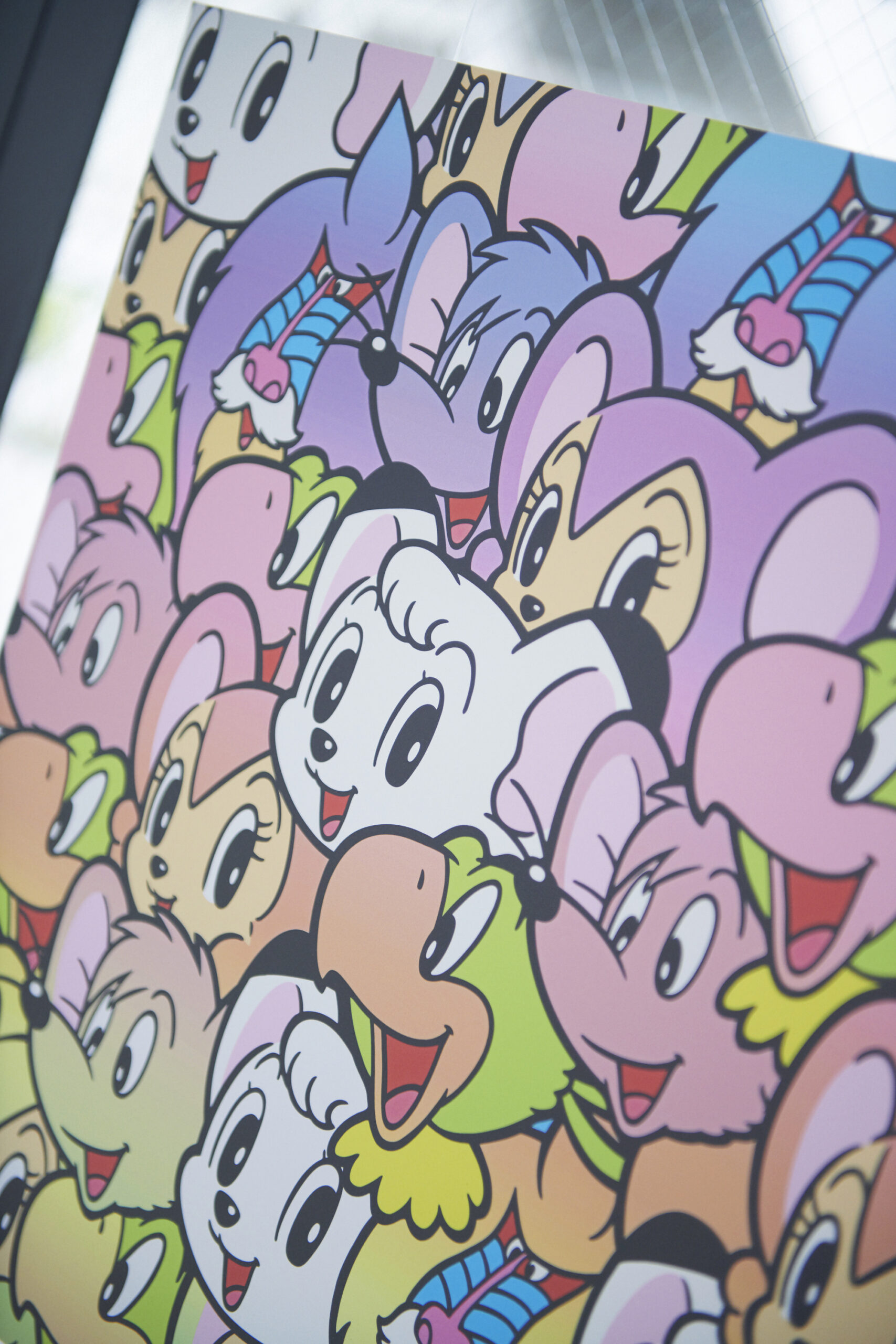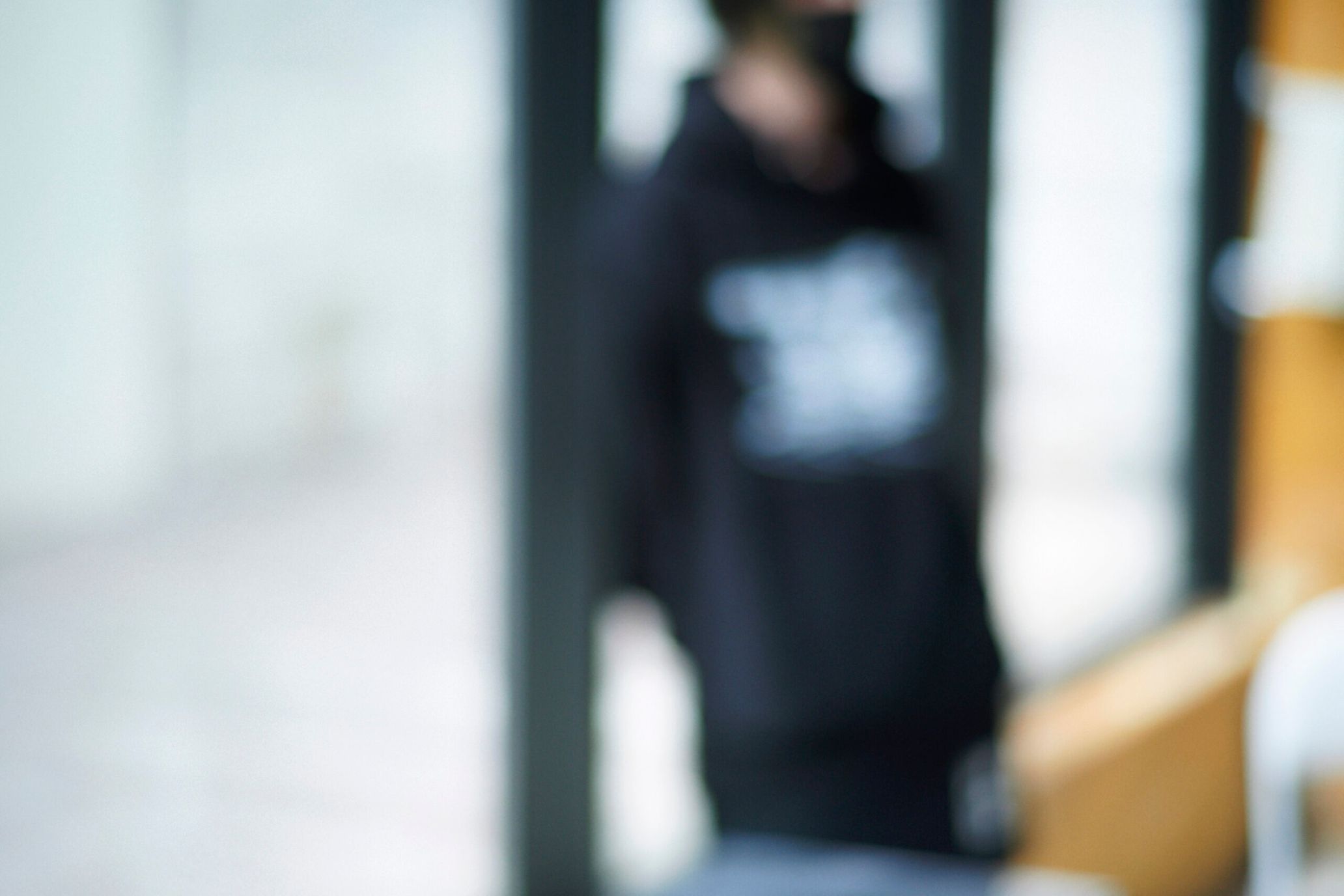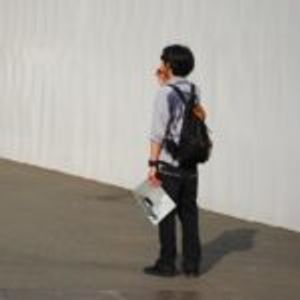Kousuke Shimizu is an artist who uses a variety of mediums including collages and illustrations to create his graphic art. In fashion, he’s had an illustrious career creating works in collaboration with brands like Comme des Garçon, KIDILL, Stüssy. He’s a creator of note in the fashion and art worlds. I asked him about his creative process at his KOUSUKE SHIMIZU x Jungle Emperor Leo collaboration pop-up event in Tokyo.
Making what he wants is his starting point
——First, I want to ask you about your personal experiences with art and subculture. What has influenced you?
Kousuke Shimizu (Shimizu): If we go back to the beginning, I remember coming in contact with Cream Soda (a brand sold in my hometown that was influenced by rock and rockabilly) when I was 15 or 16. They used a skull motif, but used it in a cute way. I was drawn to that world that could express such different aesthetics and have them complement each other. As I frequented the shop, I became friends with the staff, who told me about the record shop they got the shop’s music from. That’s when I started buying records, but only based on their cover art. There were instances when the cover art didn’t match the music at all. At the time, I wasn’t very knowledgeable about music, so I was like, “what does this mean?!” I remember how deeply I was influenced by music and artwork because until then, my only source of information was TV and magazines. Everything other than that felt so refreshing.
Cream Soda wasn’t the only brand whose clothes were being sold in my hometown. Other brands like UNDERCOVER, AAPE (A Bathing Ape®), and HYSTERIC GLAMOUR were also sold, so I was being influenced by many different cultures at once.
——So were you influenced by 90s Urahara culture as well?
Shimizu: I think I was. Like at Bounty Hunter, sometimes there are American toys at the shop where you went to find clothes. The more you look up the brands, the more you realize that certain brands promote cultural elements that seemingly have nothing to do with the brand. It was strange to realize that many people of different cultural genres were part of the same scene. But I quickly understood that strange feeling to be something natural. I’ve been living with that feeling ever since.
Shimizu: I think I was. Like at Bounty Hunter and Nexus Seven, sometimes there are American toys and non-clothing items at shops where you went to find clothes. The more you look up the brands, the more you realize that certain brands promote cultural elements that seemingly have nothing to do with the brand. It was strange to realize that many people of different cultural genres were part of the same scene. But I quickly understood that strange feeling to be something natural. I’ve been living with that feeling of mixed space and feelings ever since.
——What made you start graphic design and art?
Shimizu: It’s not that I started because I chose to do design. I started because the things I wanted started disappearing, and I decided to make them myself. From after high school to around 21, I chased after my favorite brands and bought a lot of things. But each of those brands went down different paths, and at the time, I felt like they were no longer making things for our generation. In retrospect, I understand. But I couldn’t see it at the time.
——What did you first start working on?
Shimizu: I taught myself graphic design at first because I wanted to make T-shirts. Looking back, the learning curve was probably quite steep. But at the time, it was fun because I felt myself improving, and I was immersed in that world. I feel like I took the long way around, but because of that, I was able to utilize effects and designs that I wouldn’t have been able to if I had studied the normal way.
——What was your first step in teaching yourself graphic design?
Shimizu: Probably collages using religious motifs. I used old religious artworks and combined them regardless of religion to create a single visual piece. I never ended up using them as T-shirt designs, though. I just kept making graphics. It was so fun to make, that’s all I did everyday.
Recognizing illustrations as being a combination of soft lines
——I think one characteristic of your work is your pop character illustrations, but I believe art requires a special skill. Where did you learn your art technique?
Shimizu: I don’t think too deeply about my illustrations; they exist as an extension of my doodles. I just like combinations of soft lines. I don’t draw these characters because I mean to. I have a bit of an eye for it, and I guess they come out looking like characters. Instead of looking at them as character illustrations, I see them as a combination of soft lines.
Shimizu: I don’t think too deeply about my illustrations; they exist sort of as an extension of my doodles. I just like combinations of soft lines. I don’t draw these characters because I mean to. I have a bit of an eye for it, and I guess they come out looking like characters. Instead of looking at them as character illustrations, I see them as a combination of soft lines.
——Interesting. You’re now widely known as an artist, but what was your turning point?
Shimizu: I don’t actually see myself as an artist. It’s more convenient to refer to myself as an artist or designer when explaining my work to others, so that’s why I’m referred to as that. If I were to call myself something, it would be “someone who likes to make things”. So there was never a turning point in which I “became” an artist; I always just liked creating what I wanted.
Collaboration with Jungle Emperor Leo as the culmination of his first chapter
——This collaboration with Jungle Emperor Leo came to fruition after many years of working in this medium. Any thoughts on this project?
Shimizu: This may be a small thing, but I think this is the culmination of all of my work. The first time I had my own exhibition was May of 2011. 10 years later in April of 2022, I’m having another solo exhibition. But since a couple of years ago, I’ve been asking myself how much longer I’m going to have to keep making this kind of art.
——What do you mean by “this kind of art”?
Shimizu: I think the public expects characters from my art. I thought this project would be my opportunity to meet their expectations to the max. I initially incorporated styles like this into my illustrations, like combining the eyes and splitting the face of a character into three parts to make it pop out and look three-dimensional, for fun. This exhibition was a good place to conclude my first chapter. Jungle Emperor Leo’s Leo, Laiya, and Ham Egg were all characters I’ve been familiar with and have loved since I was little, so I personally think it turned out well.
—— Is there something you’re planning to do next if this chapter of your career is coming to an end?
Shimizu: Let’s see. Now, I’m most interested in making more abstract and fragmented art. I want to create graphics that show more momentary fragments, rather than the easily recognizable characters I’ve drawn in the past. But that doesn’t mean I won’t be drawing characters in the future. What I want to do is something a little more abstract and fragmented. I already have a studio I’ll be working in, equipped with airbrushes and other tools I’ve never used before. I’ve been preparing for pieces that require handiwork, not just the use of a computer. I also want to have exhibits abroad and create things with different people.
——That’s very exciting. I guess that means we’ll be seeing an entirely different side of your art.
Shimizu: I’m not sure how it’ll go, though. But I like trying new things, so I’m excited for that. I’ve also been asked to do another collaborative project, so that might be something similar to what I’ve been doing. If you see a solo exhibition of mine in the future and it’s similar to my previous works, you can assume that it didn’t work out (laughs).
But I do think I can show you a different side of me.
Kousuke Shimizu
Based in Tokyo, Shimizu uses analog collage, screen printing, illustration, graphic art, semi-three-dimensional objects, and other mediums to create ideas and projects. He’s also worked on joint works and collaborations with brands.
http://www.koooooou.com
Instagram:@kousuke_kou
Photography Masashi Ura
Text Ryo Tajima
Translation Mimiko Goldstein

